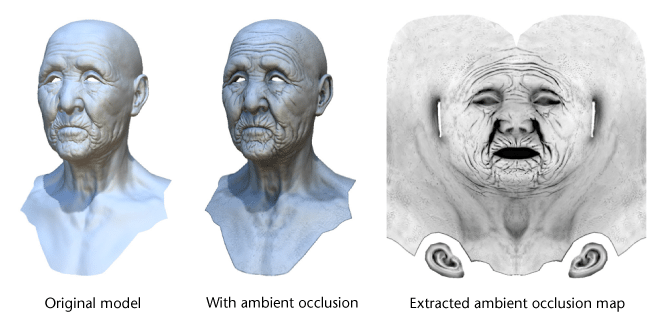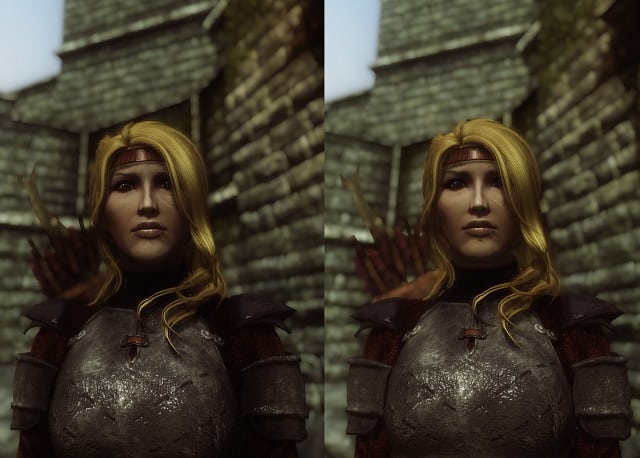In the world of games, creativity is one thing that never runs dry. As with every concept and character or storyline be it adventure, sports or action, the suspense, difficulty, visuals, character environment etc has to be captivating and intriguing. Other than that, it is important for the game environment to be as close to reality as possible to give the gamer the best feel. To achieve such realism, the effect of light and darkness becomes very important and cannot be left to chance and that is where ambient occlusion comes in.
What is Ambient Occlusion?
Ambient occlusion is a gaming software that helps game designers create games that are very close to reality. It involves using the ambient light to calculate how bright a particular part of the screen should be or how much light should be restricted to a particular part of the game environment. Let’s make this more detailed…
Game developers have found out over time that to create a good game, one of the most important aspects in photorealism is lighting, which involves ensuring that every part of the game environment receives light in the right proportion. This means that if the entire gaming environment receives the same amount of natural light, the game character ends up losing its realistic shadow. Ambient Occlusion solves this problem.
To further break it down, ambient occlusion measures how bright a particular surface should be based on its environment, with its calculation based on geometry. This means that while the ambient light ensures all parts of the environment is lit; Ambient Occlusion simulates the darkness that should naturally be seen in corners or creases or even inside a tube. It does this by blocking the ambient light in such areas.
It is most often worked out by focusing the ray of the ambient light on the surface, which gets to the background and increases the brightness of the focused surface, hence forming an appendage to its illumination. It is also called a Ray tracing technique.
Because the ray tracing method has proven to impede performance in that it can be quite slow when used for realistic computer graphics, other methods of ambient occlusion have been invented.
Types of Ambient Occlusion
Screen Space Ambient Occlusion (SSAO)
This is a screen space method invented by Crytek, aided by the Z-depth buffer input. Its graphics techniques were created in such a way as to enhance efficient ambient occlusion reality effect in games by shading pixels and evaluating the depth of each pixel to determine where occlusion should occur.
The SSAO has been preferred over other types of ambient occlusion based on a number of reasons some of which include its independence from the complexity of the game scene. Moreso, it works independently of the central processing unit (CPU) as all of its functions can be carried out on the graphics processing unit (GPU).
Furthermore, its dynamics permit moving off objects which reflect the occlusion as reality. One of its disadvantages includes the difficulty to adequately smoothen out noise without affecting other objects in the scene.
Horizon Based Ambient Occlusion (HBAO)
This method was created in an attempt to better solve the problems of the SSAO. The HBAO processes images by reproducing light and emphasizing on minute details which creates better scene reality. The HBAO is said to be more preferable to the SSAO due to its accuracy in having little or no compromise on its performance. Unlike the SSAO, it provides better quality and improved performance, with its more pronounced feature. One disadvantage to take note of with the HBAO method is that it makes the game scene darker than usual, especially in areas that would need a bit of brightness to make it more realistic.
See Also: What is Anti Aliasing, What Exactly Does it Do? [Simple Clarification]
High Definition Ambient Occlusion (HDAO)
This is a recent AO technique. Although HBAO and HDAO have been generalized to be the same, they do have similar but different effects on games. HDAO has a more realistic effect due to its much less incorrect dark shading.
Voxel Accelerated Ambient Occlusion (VXAO)
VXAO is the most recent and high ranking quality AO technique by NVidia which proves to be better than HBAO by keeping its concept simple. It keeps the light out and retains the occlusion, offering top-notch images and finer details.
Unlike the HBAO it doesn’t have issues such as dark halos, unstable results, or blurriness; this is because it makes use of the voxelcone tracing which considers images not visible to viewers, such as images that are distant from the surface. This way, a gamer will achieve a more stable result, which is far better than SSAO and HBAO, bringing realism in a game closer to being attainable.
Apart from SSAO, HBAO, HDAO and VXAO, which are more peculiar to game designers, there are other types of ambient occlusion, some of which include Screen space directional occlusion (SSDO), Alchemy ambient occlusion (AAO), and Ground truth based occlusion (GTAO), to mention a few.
Is it Better to Leave Ambient Occlusion On or Off?
The beauty of a game is reflected in its visual quality as well as other necessities which are peculiar to individual gamers. Lighting in a game goes a long way in adding to its visual quality which is what the diverse form of ambient occlusion methods seeks to attain over time, from SSAO to HBAO, HDAO, and the VXAO.
But when it comes to the decision about leaving ambient occlusion off or on, you must bear in mind that it comes with costs to performance. But generally, if you are not using a pretty powerful graphics card, you might want to leave it off entirely. Still, there’s a big difference between when the ambient occlusion is left on rather than off.
When it is left off, light rays are projected everywhere, making the game scene look too bright and quite unrealistic. Though most gamers do not see much difference in keeping it on or off, the disparity is made obvious when the occlusion takes place and darkens calculated areas in the game scene, giving it that real life effect.


